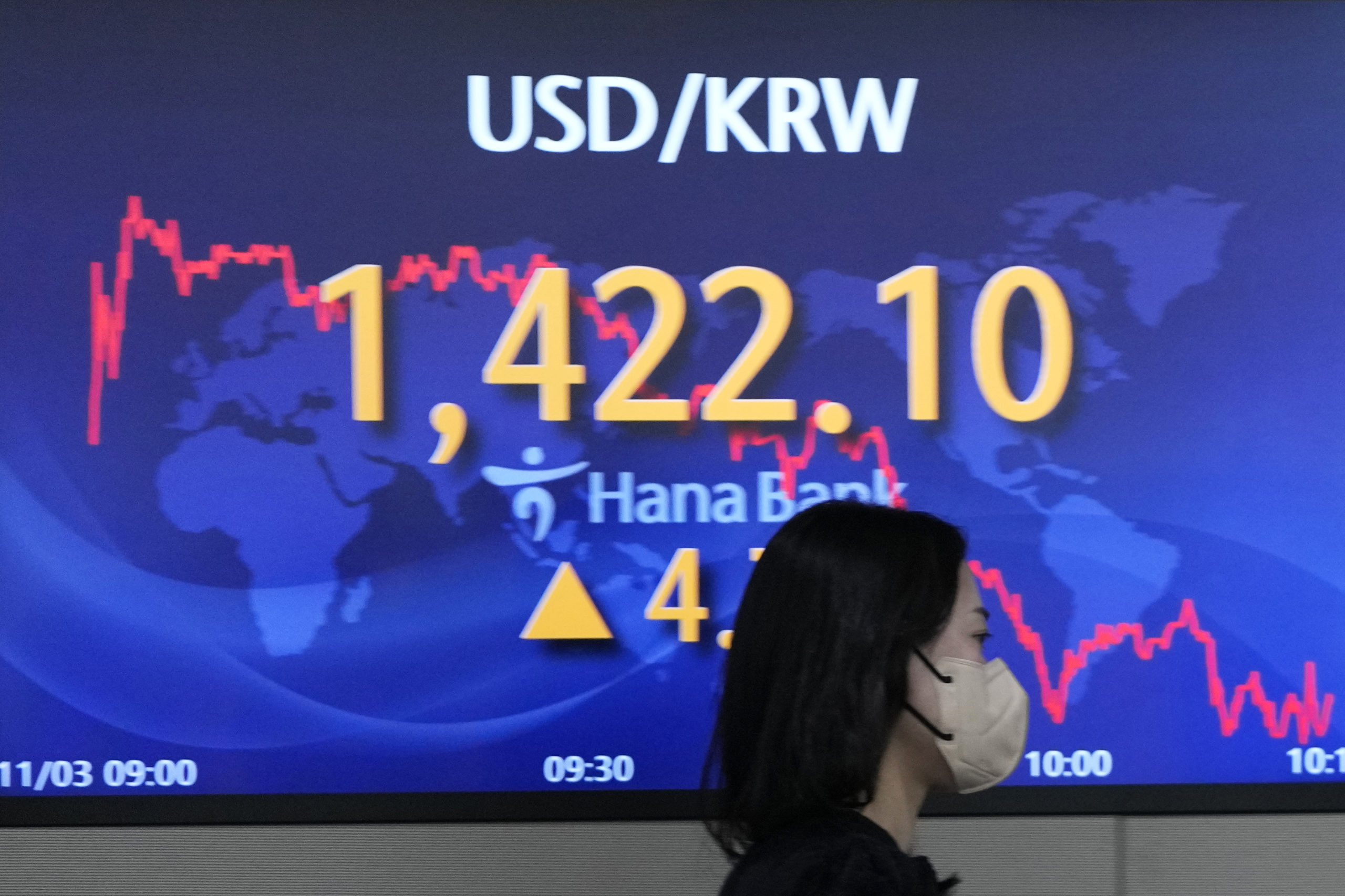TOKYO (AP) — Shares were mostly higher in Asia on Friday led by a 5.8% jump in Hong Kong’s Hang Seng index as Chinese markets were lifted by speculation that Beijing might begin to ease pandemic restrictions.
Tokyo’s Nikkei fell, catching up after Japan’s markets were closed Thursday for a holiday. Investors are watching for signs of recovering demand in China and weighing risks of further interest increases by major central banks to rein in inflation.
Wall Street’s benchmark S&P 500 lost 1.1% on Thursday and the tech-heavy Nasdaq composite index sank 1.7% a day after the Federal Reserve raised its benchmark rate for the sixth time this year. Traders are looking ahead to a closely watched U.S. jobs report due out later Friday.
In the past few days, Chinese shares have climbed on hopes that authorities might begin to ease the country’s stringent COVID-19 controls. That would alleviate supply chain disruptions that have slowed economic activity and pave the way for stronger demand from the world’s No. 2 economy.
There has been no official confirmation of any such policy changes.
Hong Kong’s Hang Seng jumped 16,221.86 while the Shanghai Composite added 2.1% to 3,060.39.
Elsewhere in Asia, Japan’s benchmark Nikkei 225 dropped nearly 2% to 27,120.61. Australia’s S&P/ASX 200 added 0.3% to 6,878.20, and South Korea’s Kospi gained 0.3% to 2,335.72.
The decline on Wall Street came a day after the central bank again raised its benchmark rate and signaled that it may need to keep hiking rates for some time to successfully squash the highest inflation in decades.
The S&P 500 fell 39.80 points to 3,719.89. The Dow lost 0,5% to 32,001.25. The Nasdaq slid 181.86 points to 10,342.94. Smaller company stocks also lost ground. The Russell 2000 fell 0.5% to 1,779.73.
Expectations of higher interest rates helped push up Treasury yields, weighing on stocks. The two-year Treasury note, which tends to track expectations for future Fed moves, rose to 4.72% from 4.61% late Wednesday and is now at its highest level since 2007, according to Tradeweb.
The yield on the 10-year Treasury rose to 4.15% from 4.09% late Wednesday. The rise in the 10-year Treasury yield has prompted mortgage rates to more than double this year and it continues putting pressure on stocks.
The central bank’s latest three-quarters-of-a-percentage-point raise brings short-term interest rates to a range of 3.75% to 4%, its highest level in 15 years. Wall Street is evenly split on whether the central bank ultimately raises rates to a range of 5% to 5.25% or 5.25% to 5.50% next year.
Higher rates not only slow the economy by discouraging borrowing, they also make stocks look less appealing compared to lower-risk assets like bonds and CDs.
Stubbornly hot inflation has been prompting central banks around the world to also raise interest rates. On Thursday, the Bank of England announced its biggest interest rate increase in three decades. The increase is the Bank of England’s eighth in a row and the biggest since 1992.
Investors had been hoping for economic data signaling that the Fed might avoid more rate hikes that might go too far in slowing the economy and bring on a recession. But hotter-than-expected data from the employment sector this week has so far signaled that the Fed will remain aggressive. On Friday, Wall Street will get a broader update from the U.S. government’s October jobs report.
So far, hiring and wage growth have not fallen fast enough for the Fed to slow its inflation-fighting efforts. If the October data shows a stronger-than-expected rise in hiring or wages, that could put pressure on the Fed to keep raising interest rates.
The Labor Department is expected to report that nonfarm employers added 200,000 jobs last month. That would be the worst showing since December 2020, when the economy lost 115,000 jobs.
Investors will also be looking ahead to the latest data on inflation at the consumer level. That report, the consumer price index, is due out next week.
“A busy week ahead for economic releases is expected with the key focus on U.S. and China inflation figures for October. China will also update October trade figures. The United Kingdom meanwhile releases third quarter GDP figures while Germany’s industrial production data will also be due,” S&P Global Market Intelligence said in its report on the upcoming week.
Wall Street has also been closely watching the latest company earnings reports. The reports have been mixed and many companies have warned that inflation will likely continue pressuring operations.
In energy trading Friday, benchmark U.S. crude rose 67 cents to $88.84 a barrel in electronic trading on the New York Mercantile Exchange. Brent crude, the international standard, gained 65 cents in London to $95.32 a barrel.
In currency trading, the U.S. dollar inched down to 148.06 Japanese yen from 148.25 yen. The euro cost 97.74 cents, up from 97.50 cents.
___
AP Business Writers Damian J. Troise and Alex Veiga contributed to this report.

